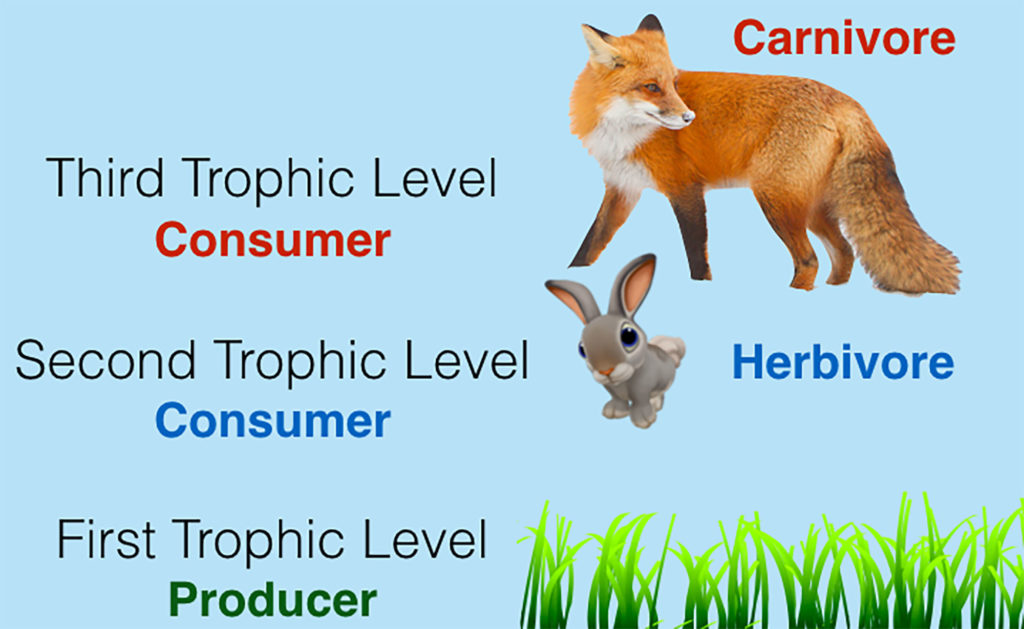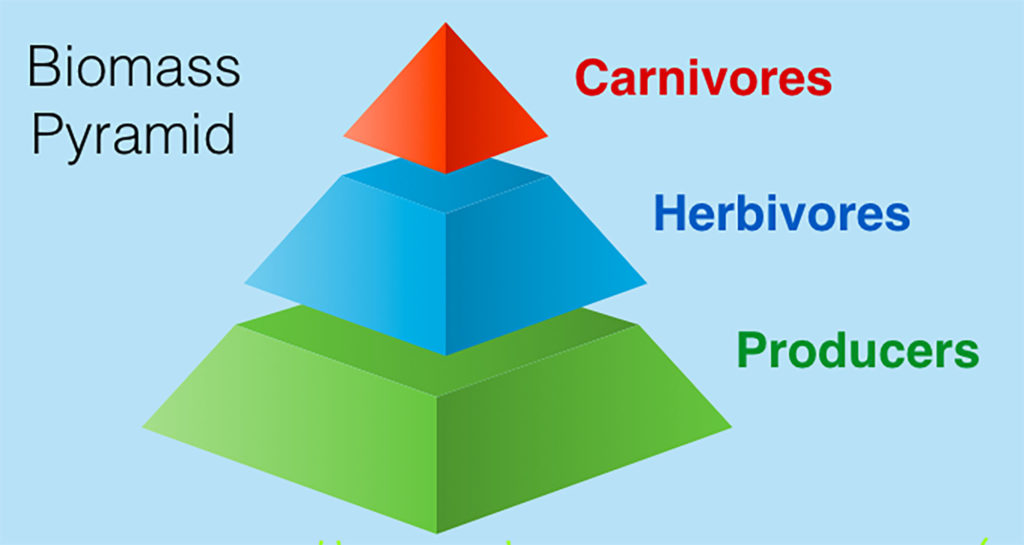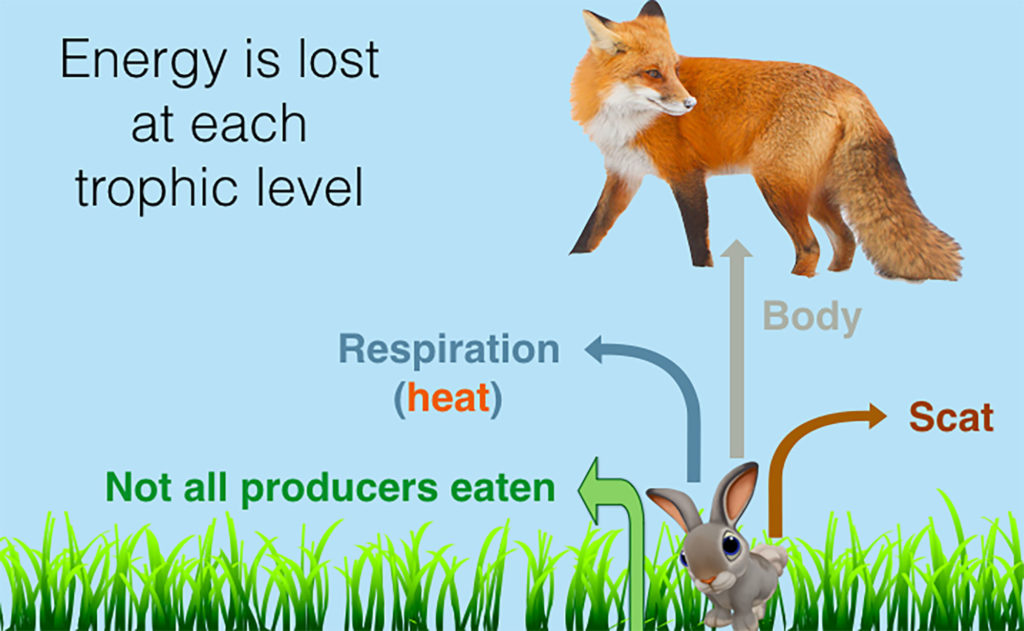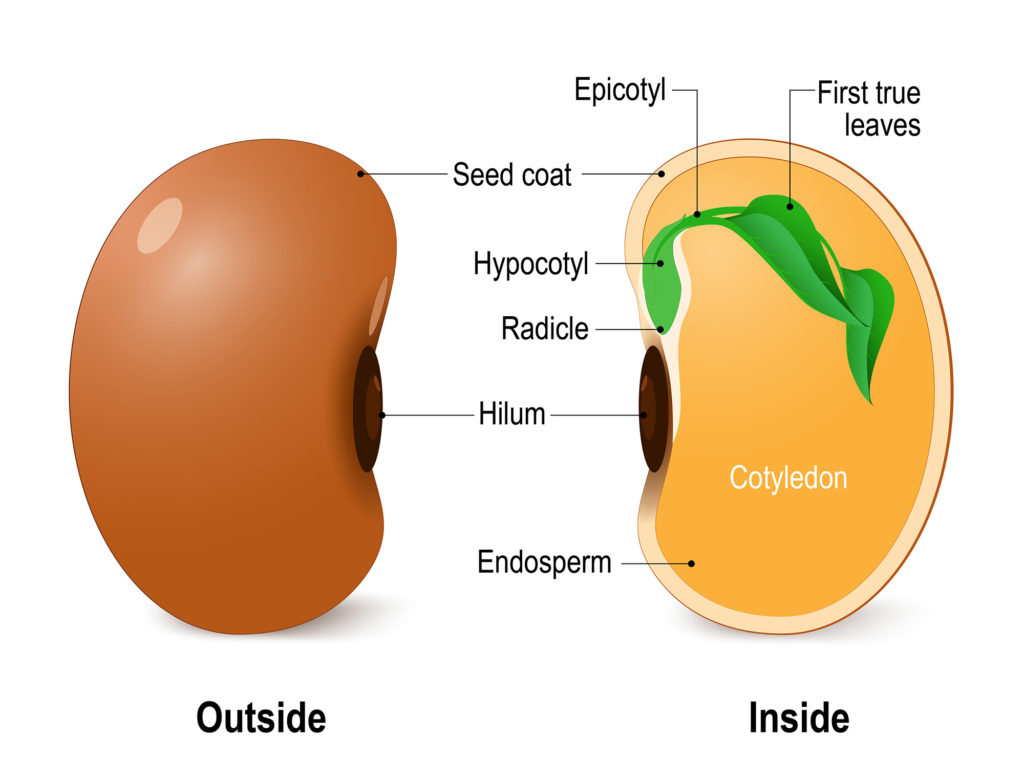
Biomass Relative Amounts of Functional Groups


Biomass Objectives:
- Explain how energy is lost at each trophic (feeding) level.
- Discuss the parts of a seed and the process of germination.
- Provide examples of commercially significant seeds.
Producers are the foundation of food webs. They convert sunlight energy into a molecular form that can be utilized by consumers and decomposers.
This video provides an overview of a biomass pyramid figure.

A food web is a visualization of “who eats who.” To construct a food web, you assign organisms to trophic (feeding) levels.
___ are the first trophic level. The herbivores that eat them are the ___trophic level, and the carnivores that eat the herbivores are the ___ trophic level. A fox can be an omnivore; in this illustration it is simply eating rabbits as a carnivore.
The “Biomass Pyramid.” indicates that there is a higher total mass of ___ in a given area than herbivores; and more mass of herbivores than carnivores.
You may have already observed while hiking that there are a lot of grass plants in a meadow and a smaller mass of organisms that eat the grass.


The explanation for why there is a greater mass of producers has to do with energy the producers trap not making it to the next trophic level.
Not all of the grass is eaten, some passes through the bunny, or is burned off. Little of that original grass energy is available to the fox.
Fox Scat in June
Fox Tracks in Snow
We saw the scat and tracks months before the animal itself, a full grown grey fox.
Here is a video of a grey fox in an enclosure. This animal was injured, rehabilitated, and is currently at the High Desert Museum.

See if you can put this into your own words; why would there be a higher biomass of berry plants than biomass of deer; or a greater biomass of thistle plants than the goldfinch birds?
Why would there be a greater biomass of deer than wolves; or goldfinches than hawks?

Seed Structure and Germination
Seeds are a critical component of the human diet.

Moisture, temperature, and/or day length can trigger germination, the development of a seed into a seedling.
Cotyledons support the developing seedling with nutrients and can in many cases also carry out photosynthesis.
These models and preserved specimens show stages of bean germination.
Beans (dicots) and corn (monocots) appear significantly different in the garden as they emerge from the ground.
Economically Important Seeds
This video provides an overview of seeds that are especially important to humans.
Grains from grasses provide almost half of the energy (calories) in the human diet.
Chia seeds have been eaten by humans for centuries; we are using them for “Chia Pets.”
The next section goes into further detail on food webs, including fruit in the human diet.

Check your knowledge. Can you:
- Explain how energy is lost at each trophic (feeding) level?
- Discuss the parts of a seed and the process of germination?
- Provide examples of commercially significant seeds?





